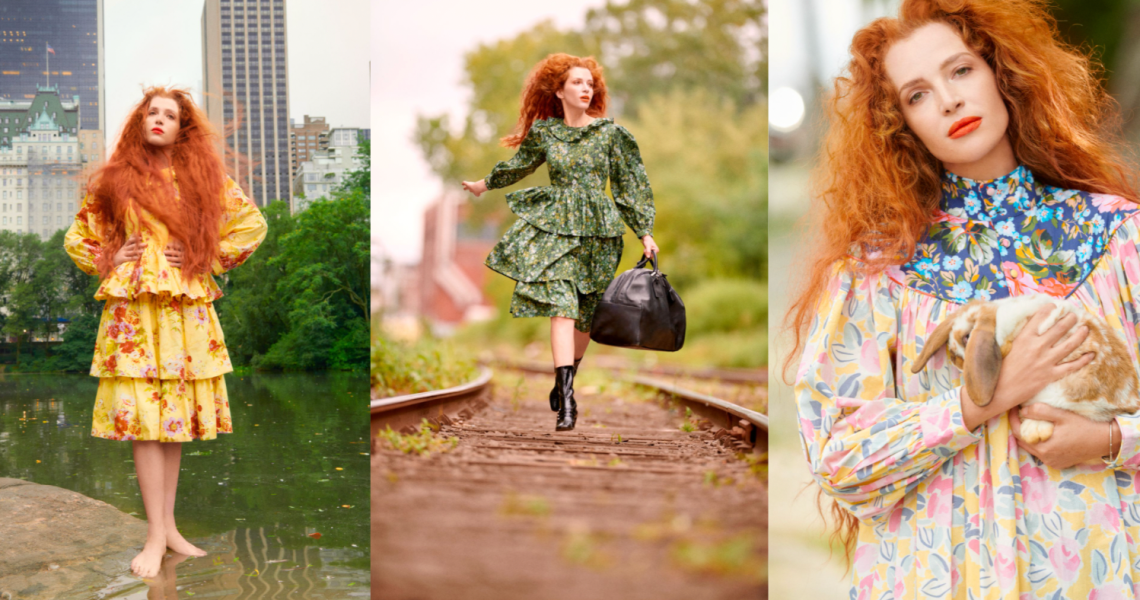“Laura Ashley was my first fashion memory,” said Batsheva Hay, designer of fashion line Batsheva. “I wore it all through childhood. I had the bedsheets and everything. When I started designing, it was inspired by my Laura Ashley memories. So when they reached out last year, I didn’t have to think twice. I knew there were many women like me who would want to see Laura Ashley reimagined.”
She was right. Much of the Batsheva x Laura Ashley collaboration that launched on October 18 sold out instantly.
Collaborations have long been at the top of the list when it comes to fashion strategies that drive buzz, bring in new audiences and simply diversify product assortment. Add nostalgia to the mix, and you have the makings of a successful partnership. See: Stoney Clover Lane x American Girl. Laura Ashley, which is approaching its 70th anniversary is in the middle of a relaunch of sorts, with a more formal rollout of fashion coming in 2023. Last year, it was acquired by Gordon Brothers. Until then, collaborations are its way of finding relevancy among a modern audience.
For Laura Ashley, “collaborations are a huge strategy,” said Anne Gordon, creative director at Gordon Brothers, the company that owns the brand. In addition to Batsheva, recent collaborations have included Rag & Bone, Barbour and Meme Chose.
Laura Ashley also recently collaborated with Aerosoles in July, which gave it a chance to experiment with shoes, a category it does not make itself. “We’re not sure when and if we ever will [make footwear],” said Carolyn D’Angelo, president of Laura Ashley. “But doing collabs with footwear is a way for us to participate in that industry without actually making it or producing ourselves.” For Aerosoles, the collaboration allowed an opportunity to give a unique push to its sustainably-minded Aware collection, which gives 1% of sales to 1% For The Planet.
To promote the collaboration, Aerosoles tapped influencer and former Man Repeller editor Harling Ross, to work on the behind-the-scenes strategy. Aerosoles CEO Alison Bergen called the collaboration “the strongest received collection, from a press perspective,” during her three-year tenure. The partnership received coverage in Refinery29, Forbes and PureWow, among other publications.

@harlingross
The nostalgia was part of the appeal for Bergen, as it was for Hay. “The history of the Laura Ashley brand is nostalgic for many, not excluding me, who grew up in a floor-to-ceiling Laura Ashley bedroom,” she said. “[It] felt very relevant again, given its alignment with trends in apparel,” including peasant dressing, feminine floral prints and various elements that celebrate the blending of personal and home decor.
“It is also very personal for me. Growing up in Lancaster Pennsylvania, where we had no idea what Gucci was, it was my first touchpoint with a brand I desired and recognized. It is a brand that doesn’t try too hard but signifies some form of humble luxury,” she said.
It seems that collaborating with Laura Ashley is mutually beneficial. Laura Ashley regains relevance with a younger (and perhaps cooler) customer, while brands like Batsheva and Aerosoles get to tap into the nostalgic mood that has resonance right now.
“It’s [about] the archive and the prints,” D’Angelo said, pointing to one obvious perk of working with Laura Ashley. “But it also helps that those prints translate so easily from a men’s Rag & Bone sweatshirt to the lining of a Barbour jacket.”




